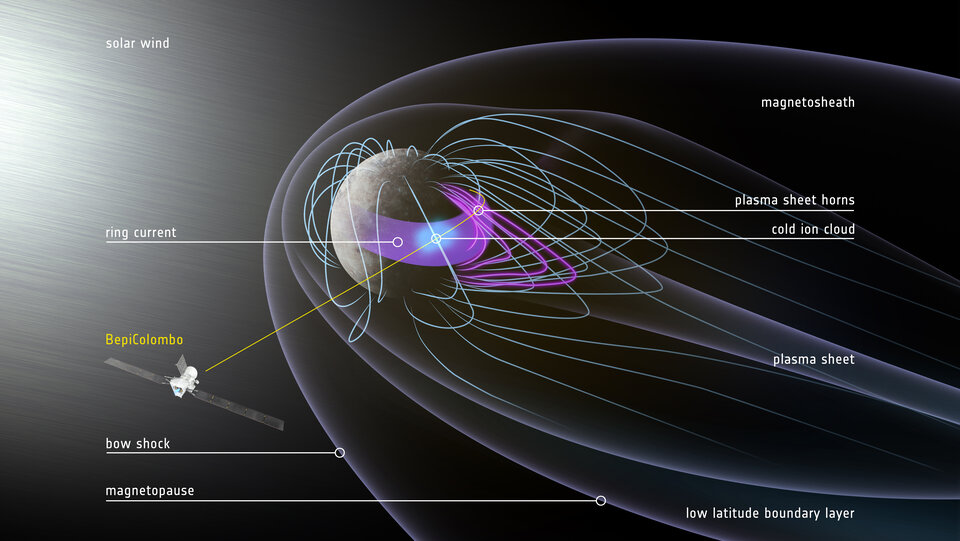A tantalizing glimpse of plasma composition during the third Mercury flyby of BepiColombo !
Understanding Mercury’s magnetosphere is crucial for advancing our comprehension of how the solar wind interacts with the planetary magnetospheres. Despite previous missions, several gaps remain in our knowledge of Mercury’s plasma environment. A recent study, carried out by scientists from CNRS Terre & Univers and published in Nature Communications Physics offers a rare dawn-dusk synoptic view of the large-scale structure of Mercury’s magnetosphere that is not very different from Earth’s.
Combined observations obtained during the third Mercury flyby of BepiColombo in June 2023 by the Mass Spectrum Analyzer (MSA) built by LPP, the Mass Ion Analyzer (MIA) built by JAXA, and the Mass Electron Analyzer (MEA) built by IRAP, all embarked onboard the Japanese probe Mio, revealed new insights about the spatial distribution of the plasma around Mercury, highlighting the presence of cold ions (≤50 eV), energetic ions populations (up to 38 keV) trapped in a ring current, and energetic electrons (up to 10 keV) deep in the magnetosphere of the planet.
Whereas the observed energetic ions play a significant role in the ion recycling in Mercury’s magnetosphere with ion sputtering producing secondary neutrals and ions from the planet’s surface, the contribution to the plasma pressure and dynamics of the observed low-energy ions of planetary origin remains one of the big questions that BepiColombo is going to address. These observations, obtained during the cruise phase of the mission, provide a tantalizing glimpse of future discoveries expected from the Mercury Plasma Particle Experiment (MPPE) instruments after orbit insertion, promising broader impacts on our understanding of planetary magnetospheres.

A textured sphere representing Mercury is shown with magnetic field lines compressed on the sunward side and streaming out into a tail on the nightside. The BepiColombo spacecraft’s trajectory is drawn passing through the magnetosphere from dawn to dusk, close to the planet’s surface. Credits: ESA.
Further Resources
- Scientific Publication : Hadid, LZ, Delcourt, D., Harada, Y. et al. L’environnement plasmatique de Mercure après le troisième survol de BepiColombo. Commun Phys 7, 316 (2024). https://doi.org/10.1038/s42005-024-01766-8. https://www.nature.com/articles/s42005-024-01766-8
- Press Releases :
- Instruments onboard :
IRAP Contacts
- Nicolas ANDRE (IRAP and ISAE-SUPAERO), nicolas.andre@irap.omp.eu et nicolas.andre@isae-supaero.fr
- Emmanuel PENOU, emmanuel.penou@irap.omp.eu
- Mathias ROJO, mathias.rojo@irap.omp.eu
- Jean-André SAUVAUD, jean-andre.sauvaud@irap.omp.eu
- Christophe VERDEIL, christophe.verdeil@irap.omp.eu






